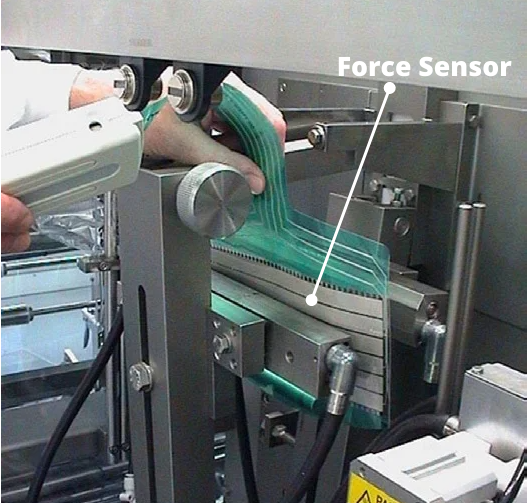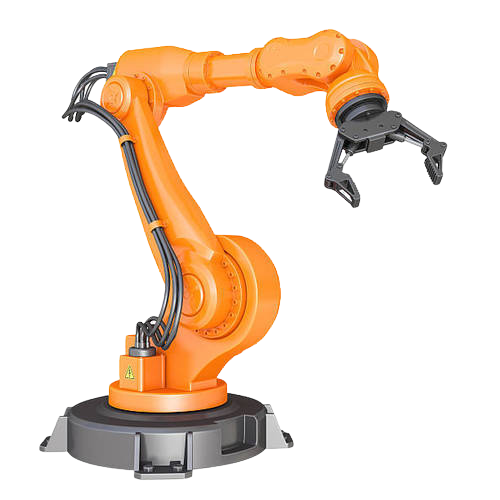
To remain ahead of the competition, all manufacturers are incorporating the capabilities of force mapping and sensing using Force Sensing Resistors (FSR) into equipment and processes. Sensors keep checks in every step of manufacturing, from confirming the machine’s setup to measuring pressures on the product that is going through the manufacturing line. This allows manufacturers to:
1. Implement error-proof processes and verify the process for national and international compliance regulators
2. Reduce the amount of waste generated by manufacturing process, which will result in lowering costs for products, higher profits, and a lower carbon footprint.
3. Automate processes to avoid disruptions in supply chains and remain at the top of the market.
Error Reductions in Food and Beverage Manufacturing

A variety of initiatives have been launched to tackle the issue of preventing manufacturing errors. Regardless of how well-executed or documented, instructions and training will never fully stop human error from happening. Manufacturers who want to eliminate defects require mechanisms and equipment like pressure sensors and force sensors to improve their production and quality control processes, which will assist them in achieving higher quality, higher yields, and reduced cost. Manufacturers can produce bulk in less time, thus increasing satisfaction with their customers and keeping the supply chain in continuous motion.
One international food and drink processing firm with facilities around the globe was working on an enterprise-wide initiative to improve their quality control procedures. They needed a method of conducting tests of evenness on an item that was used for packaging. The food packaging industry needs to maintain the highest standards for their seals on packaging. This is to safeguard consumers from the possibility of receiving damaged products. The sealing bars are used to secure the two parts of a container in a temperature-sensitive environment and their alignment is essential to reduce loss and ensuring the quality. Operators are often required to verify the alignment of their equipment and don’t have time to wait around for the machine to cool down. Integrating the technology of pressure mapping to the user-interface of the sealing machine, and embedding sealing bar using high-temperature pressure sensors, helps save time during machine setup along with routine maintenance, reducing downtime, and reduces the chance of packaging being damaged.
Linepro’s Force Sensing resistors are designed by expert engineers having wide experience in the field for decades. Customized Force Sensors from simple to tough projects are manufactured at our hi-tech manufacturing facility.
Manufacturers across Industries are improving their processes using pressure Sensors as well as Pressure Mapping Technology
There are obvious advantages for integrating pressure mapping technology in food and beverage processing applications. Other industries, such as Electronic Assembly, are also ideal candidates to incorporate Pressure mapping in their operations. Electronic assembly is typically carried out by high-precision robotic machines which are charged with moving and putting delicate components on the circuit board. Integrating the technology of pressure mapping into an assembly machine will aid in ensuring that all robotic components are in sync with component of the circuit board. Integrating high-resolution pressure sensors with electronics, and custom-designed software allows for a seamless workflow to ensure this process is safe.
Pressure Mapping using Force Sensing Resistors for Automobile Industry
Automobile manufacturers are aware that noise, wind, and water leaks within a brand-new vehicle could be a huge cause of customer discontent and result in a perception of poor quality, and the cost of warranty repairs. A proper adjustment of hinges and door latches, when the vehicle is at the factory while the doors are installed can prevent problems like these. In past, the technicians working on vehicle assembly were forced to determine where to place the doors and hinges. To determine the pressure on the seal on the door, they would place a piece of newspaper between their body and the strip to gauge the degree of pull at different places. With the help of a pressure mapping system, technicians working on assembly have access to an electronically-controlled “feeler” gauge which is able to measure the pressure of contact, as well as functioning as an instant feedback mechanism. Technicians can utilize the gauge to improve the sealing pressure and deflection around frames of the doors.
Pressure mapping in cars is also possible to determine the seat occupants’ tentative age so as to calibrate the intensity with which the air-bags may inflate in case of accidents. This helps prevent injuries due air bags in cars which strike with excessive force, especially with infant occupants.
Force Sensing Resistors used for Pressure Mapping in Force Controlled Grippers of Robotic Hand
When it comes to the use of automation such as gripping devices used predominantly in robotics, the end effectors (robotic fingers) have to be able to perform all tasks given and to comprehend the varied nature of the environment, precise sensors, actuators, and algorithms. Certain end effectors are non-anthropomorphic or anthromorphic grippers which are designed to replace human motions and processes.

From a mechanical perspective, gripping systems must have at least two points of contact with the target. Different studies have examined the development and control of grip forces by monitoring various sensor information that are similar to those of a hand to be used in various areas such as research, industry and military applications.
The use of tactile sensors as input device is crucial to ensure secure control of grippers that interact with objects, humans as well as in non-structured areas, where typically interaction is planned at specific places (typically near the tip of the end-effector). The force and torque sensors are widely and effectively adopted. However the capability for a better controlling is needed. A better control capability is required, for instance, in situations where the location and characteristics of the contact cannot be accurately predicted or modeled in advance. Skin-like sensors as well as appropriate sensors for process of the distributed data are essential, to allow the use of safe interactions and immediate system response.
The sensors that are tactile provide information through physical interaction with the environment. They should be integrated into skin surfaces that are compliant and conforming to local surfaces and with enough friction to safely handle objects. The sensors as well as the synthetic elastomeric skin should also be durable enough to endure repeated impact, whether controlled or uncontrolled force of touch as well as scratches. Force Sensing Resistors are seen as an interactive media between the gripper and its surrounding environment.
The interactions such as manipulation grip force control surfaces, kinematics and stability assessment are all considered to ensure an efficient handling as well as friction and hardness. The ability to react in real-time to environmental conditions is essential.
To address these issues, we examined the features of the various types of tactile sensors. One possibility for a tactile sensing solution could be based upon resistors that sense force, based on the piezo-resistance principle. Before integrating the sensors, several calibrators and lab analyses are needed. The resistors that are force sensitive were calibrated with the digital force meter, a commercially accessible electronic development boards and a custom-designed software platform.
Are you interested in learning how using pressure mapping can assist your business to improve its quality control procedures and overall effectiveness? Linepro has executed various projects for force mapping using force sensing resistors. We have worked with numerous industry verticals and can offer customized project execution. Share your project details and we start guiding you!

